Balkinization
an unanticipated consequence of
Jack M. Balkin
Balkinization Symposiums: A Continuing List
E-mail:
Jack Balkin:
jackbalkin at yahoo.com
Bruce Ackerman
bruce.ackerman at yale.edu
Ian Ayres
ian.ayres at yale.edu
Corey Brettschneider
corey_brettschneider at brown.edu
Mary Dudziak
mary.l.dudziak at emory.edu
Joey Fishkin
joey.fishkin at gmail.com
Heather Gerken heather.gerken at yale.edu
Abbe Gluck abbe.gluck at yale.edu
Mark Graber
mgraber at law.umaryland.edu
Stephen Griffin
sgriffin at tulane.edu
Jonathan Hafetz
jonathan.hafetz at shu.edu
Jeremy Kessler
jkessler at law.columbia.edu
Andrew Koppelman
akoppelman at law.northwestern.edu
Marty Lederman
msl46 at law.georgetown.edu
Sanford Levinson
slevinson at law.utexas.edu
David Luban
david.luban at gmail.com
Gerard Magliocca
gmaglioc at iupui.edu
Jason Mazzone
mazzonej at illinois.edu
Linda McClain
lmcclain at bu.edu
John Mikhail
mikhail at law.georgetown.edu
Frank Pasquale
pasquale.frank at gmail.com
Nate Persily
npersily at gmail.com
Michael Stokes Paulsen
michaelstokespaulsen at gmail.com
Deborah Pearlstein
dpearlst at yu.edu
Rick Pildes
rick.pildes at nyu.edu
David Pozen
dpozen at law.columbia.edu
Richard Primus
raprimus at umich.edu
K. Sabeel Rahmansabeel.rahman at brooklaw.edu
Alice Ristroph
alice.ristroph at shu.edu
Neil Siegel
siegel at law.duke.edu
David Super
david.super at law.georgetown.edu
Brian Tamanaha
btamanaha at wulaw.wustl.edu
Nelson Tebbe
nelson.tebbe at brooklaw.edu
Mark Tushnet
mtushnet at law.harvard.edu
Adam Winkler
winkler at ucla.edu
Compendium of posts on Hobby Lobby and related cases
The Anti-Torture Memos: Balkinization Posts on Torture, Interrogation, Detention, War Powers, and OLC
The Anti-Torture Memos (arranged by topic)
Recent Posts
Racial Orders and American Political Development: International, Intra-Coalitional, and Individual Dimensions
Just A Few Blogs
ACS Blog
Alas, a Blog
Althouse
Arts and Letters Daily
Atrios (Eschaton)
Bill of Health
Buzzflash.com
Buzz Machine
Cato at Liberty
Juan Cole (Informed Comment)
Concurring Opinions
The Constitution in 2020
Corrente
Crooked Timber
Daily Howler
Daily Kos
Dana Boyd
Brad DeLong
Digby (Hullabaloo)
Discriminations
Daniel Drezner
Kevin Drum (Mother Jones)
Electrolite
En Banc
Eunomia (Daniel Larison)
Fafblog
Michael Froomkin (Discourse.net)
GovLab (Beth Noveck)
Rick Hasen (Election Law)
History News Network
How Appealing
Ignatz (Sam Heldman)
The Importance of (Ernie Miller)
Infolaw
Instapundit
International Economic Law and Policy Blog
IntLawGrrls
Jacob Levy
Jesus' General
Jurisdynamics
The Kitchen Cabinet
Mark Kleiman
Law Blog Central
Larry Lessig
Lawyers, Guns and Money
Liberal Oasis
Brian Leiter's Law School Reports
The Leiter Reports
Marginal Revolution
Megan McArdle
Memeorandum
Metafilter
Mirror of Justice
The New Republic
Newseum
No More Mister Nice Blog
Brendan Nyhan
Opinio Juris
Orcinus
The Originalism Blog
Pandagon
Passport (Foreign Policy)
Overcoming Bias
Political Animal (Washington Monthly)
Political Theory Daily Review
Political Wire (Taegan Goddard)
The Poor Man
Virginia Postrel
Prawfsblawg
Public Reason
Jonathan Rauch
Raw Story
Redstate
ReligiousLeftLaw.com
Reporters Committee For Freedom of the Press
Reproductive Rights Blog
Rothman's Roadmap to the Right of Publicity
SCOTUS Blog
Seeing the Forest
Clay Shirky
The Shifted Librarian
The Situationist
Larry Solum (Legal Theory)
Andrew Sullivan
Talking Points Memo
Talk Left
Tapped
Tbogg
TechPresident
The Paper Chase (Jurist)
Tom Paine
Tom Tomorrow (This Modern World)
Eve Tushnet
Uggabugga
University of Chicago Law School Faculty Blog
Unqualified Offerings
The Volokh Conspiracy
War and Piece (Laura Rozen)
Wampum
Oliver Willis
Wonkette
Written Description
Matthew Yglesias
Yin
Your Choice of Feeds
1. XML
powered by
2. Atom Feed
3. RSS 2.0
Racial Orders and American Political Development: International, Intra-Coalitional, and Individual Dimensions
Guest Blogger
For the Balkinization Symposium on Rogers M. Smith and Desmond King, America’s New Racial Battle Lines: Protect versus Repair (University of Chicago Press, 2024). Chloe Thurston America’s New Racial Battle Lines: Protect versus Repair is
the latest installment of a now two-decades-long collaboration between Rogers
Smith and Desmond King to trace the “deep story” of American racial politics
that undergirds American political development. Beginning with their 2005
article “Racial Orders and American Political Development,” (and influenced by
each of the authors’ earlier work), King and Smith made the case that over
centuries, American political development has been characterized by competition
for governing authority and institutional control between two competing racial
orders: one, committed to using government power to uphold white supremacy and
the other, transformative egalitarian order, seeking to realize the
revolutionary potential of the ideals laid out in the Declaration of
Independence. While the issues of the
day may have shifted over time (from enslavement versus emancipation up to
1865, to de jure segregation versus integration of the 1890s to 1960s, to
race targeted versus colorblind from the 1970s to 2010s), the institutional and
electoral logic of American politics encourages this underlying pattern of
conflict to persist. Smith and King’s new book extends this work to examine our
current era of racial policy conflict. America’s New Racial Battle Lines argues
that the liberal, race-conscious alliance of more recent decades has been
replaced as of the 2020s by a “Repair” alliance tied together by a belief in
the inadequacy of race-conscious measures given the pervasiveness of racial
injustice throughout American history and into the present. The Repair alliance
instead calls for “sweeping institutional transformations” in order to “repair
what they see as the nation’s fundamental flaws” (4). Meanwhile, what was
previously a conservative colorblind alliance has transformed into a
conservative “Protect” alliance that is more likely to view anti-white racism
as the most pernicious form of present-day bigotry, and to orient its adherents
to the need to “to protect, and also restore, those characteristics of
America and Americans that they regard as traditional sources of its greatness…[including,
for many,] having always been a white, Christian, male-led capitalist nation”
(5). America’s New Racial Battle Lines brings an
impressive wealth of data on the organizational landscape and connections
between organizations within these competing camps. It provides further insight
through interviews with 30 actors involved in these organizations and
movements. This is a service to political science by again pushing the
discussion of American racial politics beyond public opinion and measures of
white racial resentment to understand the long coalitions of groups with
intense policy preferences that operate across venues and time. On the Repair side, the authors trace the rise of new
organizational alliances and networks working to reshape educational, criminal
justice, and environmental justice polices, among other substantive areas, operating
especially through local and state governments, and with some allies in
Congress. On the Protect side, the authors join in recent efforts by Danial HoSang, Joseph Lowndes
and others to understand the rise of what appears to be a growing conservative
multiracial movement and helps to grapple with some of the twists and turns
surrounding the apparent rising appeal of right wing populism among some groups
of nonwhite voters. Binding together the rise of these new organizations on
both sides of the new racial divides are the seismic economic shifts of the
1970s that gave rise to increasing wealth inequality and paved the way for
philanthropic organizations in search of new tax advantaged places to invest
their growing funds (chapter 3). Among this book’s many contributions is its depiction of the
racial orders framework as one that can be evaluated against rival claims about
the past and present character of racial politics and inequality in the U.S.:
class-first or capitalist approaches, white hegemony approaches, and
intersectional ones. (The authors also wade into the ongoing debates on racial
capitalism, ultimately characterizing the framework as too ambiguous with
regard to mechanisms and underlying premises to make its analytical uses
self-evident.) The exercise of walking through the alternatives reveals once
again the value of tracing alliances, actors, stated commitments, institutions,
ideologies, and material concerns over time, over leading with these theoretical
priors. This is not to say that these rival perspectives are misguided. More
often, Smith and King find evidence sometimes in support of the expectations of
different rival perspectives and often not enough evidence to allow us to refute
any of the rival explanations wholesale. In short, Smith and King rightly point
out the limitations of grand narratives, in favor of a careful delineation of
ideas, institutions, commitments, that an orders-based approach leverages
institutional features of American politics to explain why we see these issues persistently
reemerge on racial lines. There is much to like about this book, and yet I am also
left with a few lingering questions that it raises for future APD scholars (or,
potentially, for the next iteration of Smith and King’s long collaboration). The
first set of questions has to do with how APD should consider the U.S. in
international context. The second set of questions focuses more inwardly on how
to think about intra-coalitional dynamics, voters, and political socialization. First, how might we adapt an orders-based approach oriented
and developed with explaining domestic political formations and conflicts, to a
transnational and international organizational and ideological landscape? I’m
not the first to point out the transnational dimensions of domestic racial
politics, as Debra Thompson’s case for interactive
political development makes clear. But both alliances have been influenced
by (and themselves have influenced) international movements and ideologies, as
well as by events (including climate change, war and political violence,
migration, and a the COVID-19 pandemic) that do not end at national boundaries,
raising important questions about how to reorient APD frameworks that are often
domestically-focused. Second, while the authors are careful in characterizing the diversity
of actors, programs, and ideas contained within each alliance rather than
depicting either as monolithic, future work might linger on the
intra-coalitional dynamics. What factors drive some actors, groups, and policy
ideas represented within the broader coalition to be dominant and others less
so? Smith and King seem to suggest at times that the need to appeal to enough
voters or to resonate with broader American cultural commitments may shape some
factions’ success or failure. Some organizational actors themselves may want to
avoid association with the most unsavory elements within their coalition – a
reason for why they believe multiracial conservativism is ultimately likely to
win-out over a more extreme White Nationalist Conservatism (chapter 10). But is
this right? Scholars of interest group politics frequently note that groups can
move policy towards the extremes outside of the preferences of ordinary voters. More focus on intra-coalitional dynamics may also provide
new insights into other material dimensions that may shape the range of actions
and positions taken on behalf of these alliances: How do material factors shape
intra-coalitional politics and policy priorities? Or at the very least, what do
they reveal about what underlies those priorities? That Evanston, Illinois’s
reparations program was funded through a brand new tax source rather than an
existing one suggests something about how policymakers viewed the potential
distributional challenges of repair policies. As Jared
Clemons shows in his work, white liberal anti-racists’ reduced support for
policies that would tangible reduce racial opportunity and wealth gaps when it
threatens their familial capital reveals something about the depth of
commitment to this agenda. Similar questions can be asked about the role of
material factors in shaping the direction of the Protect alliance, particularly
when it comes to reckoning with the costs of Trump’s immigration positions if
realized. Third, and finally, it is worth considering the consequences
of America’s new racial battle lines for political socialization. APD tends to focus
on institutional development and change but it may be worth bringing voters and
the mass public back in as a source of reproduction and change in these racial policy
alliances. We might want to think more about how these conflicts and their
outcomes across different levels of government and in different venues shapes
individual orientations and behavior. This is especially true given how much
fights over racial orders take place in schools and churches. None of this is
new, as work by Ursula
Hackett reminds us. But there is also evidence that these new racial battle
lines are shifting
how at least white parents talk to their children about race. Further
connecting the institutional and organizational to the familial and individual may
represent a the new frontier in terms of understanding other factors that help
to reproduce but also change America’s racial battle lines. Smith and King end on a note of, well, not exactly optimism.
In describing six possible futures of these new racial battle lines, they do
rank the worst outcome (an escalation of race-related violence in the U.S.) as
the least likely – though, as the authors confess, this is based more in hope
than any objective assessment. I hope they are right. In the meantime, zooming out
to the international and in to the intra-coalitional and individual should give
us more purchase on the past and future of America’s racial battle lines. Chloe Thurston
is associate professor of political science and Institute for Policy Research
faculty fellow at Northwestern University. You can reach her by e-mail at thurston@northwestern.edu.
Posted
9:30 AM
by Guest Blogger [link]
Books by Balkinization Bloggers

Linda C. McClain and Aziza Ahmed, The Routledge Companion to Gender and COVID-19 (Routledge, 2024)

David Pozen, The Constitution of the War on Drugs (Oxford University Press, 2024)

Jack M. Balkin, Memory and Authority: The Uses of History in Constitutional Interpretation (Yale University Press, 2024)
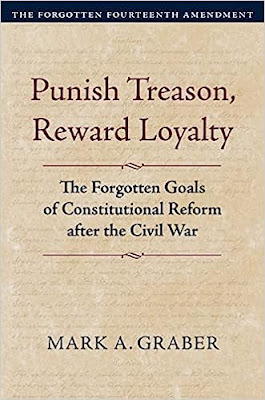
Mark A. Graber, Punish Treason, Reward Loyalty: The Forgotten Goals of Constitutional Reform after the Civil War (University of Kansas Press, 2023)
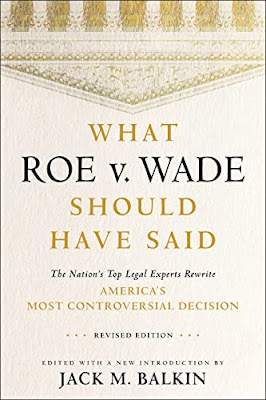
Jack M. Balkin, What Roe v. Wade Should Have Said: The Nation's Top Legal Experts Rewrite America's Most Controversial Decision - Revised Edition (NYU Press, 2023)

Andrew Koppelman, Burning Down the House: How Libertarian Philosophy Was Corrupted by Delusion and Greed (St. Martin’s Press, 2022)

Gerard N. Magliocca, Washington's Heir: The Life of Justice Bushrod Washington (Oxford University Press, 2022)
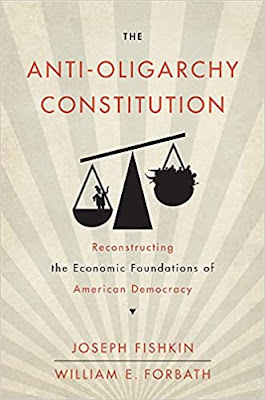
Joseph Fishkin and William E. Forbath, The Anti-Oligarchy Constitution: Reconstructing the Economic Foundations of American Democracy (Harvard University Press, 2022)

Mark Tushnet and Bojan Bugaric, Power to the People: Constitutionalism in the Age of Populism (Oxford University Press 2021).

Mark Philip Bradley and Mary L. Dudziak, eds., Making the Forever War: Marilyn B. Young on the Culture and Politics of American Militarism Culture and Politics in the Cold War and Beyond (University of Massachusetts Press, 2021).

Jack M. Balkin, What Obergefell v. Hodges Should Have Said: The Nation's Top Legal Experts Rewrite America's Same-Sex Marriage Decision (Yale University Press, 2020)

Frank Pasquale, New Laws of Robotics: Defending Human Expertise in the Age of AI (Belknap Press, 2020)

Jack M. Balkin, The Cycles of Constitutional Time (Oxford University Press, 2020)

Mark Tushnet, Taking Back the Constitution: Activist Judges and the Next Age of American Law (Yale University Press 2020).

Andrew Koppelman, Gay Rights vs. Religious Liberty?: The Unnecessary Conflict (Oxford University Press, 2020)

Ezekiel J Emanuel and Abbe R. Gluck, The Trillion Dollar Revolution: How the Affordable Care Act Transformed Politics, Law, and Health Care in America (PublicAffairs, 2020)

Linda C. McClain, Who's the Bigot?: Learning from Conflicts over Marriage and Civil Rights Law (Oxford University Press, 2020)
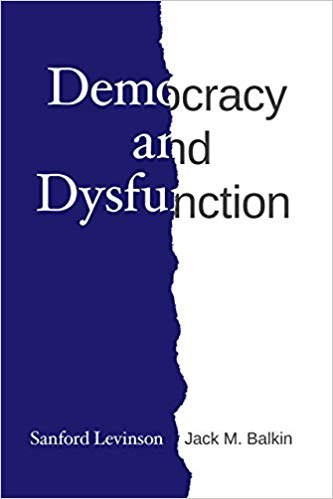
Sanford Levinson and Jack M. Balkin, Democracy and Dysfunction (University of Chicago Press, 2019)

Sanford Levinson, Written in Stone: Public Monuments in Changing Societies (Duke University Press 2018)

Mark A. Graber, Sanford Levinson, and Mark Tushnet, eds., Constitutional Democracy in Crisis? (Oxford University Press 2018)

Gerard Magliocca, The Heart of the Constitution: How the Bill of Rights became the Bill of Rights (Oxford University Press, 2018)

Cynthia Levinson and Sanford Levinson, Fault Lines in the Constitution: The Framers, Their Fights, and the Flaws that Affect Us Today (Peachtree Publishers, 2017)

Brian Z. Tamanaha, A Realistic Theory of Law (Cambridge University Press 2017)

Sanford Levinson, Nullification and Secession in Modern Constitutional Thought (University Press of Kansas 2016)

Sanford Levinson, An Argument Open to All: Reading The Federalist in the 21st Century (Yale University Press 2015)

Stephen M. Griffin, Broken Trust: Dysfunctional Government and Constitutional Reform (University Press of Kansas, 2015)

Frank Pasquale, The Black Box Society: The Secret Algorithms That Control Money and Information (Harvard University Press, 2015)

Bruce Ackerman, We the People, Volume 3: The Civil Rights Revolution (Harvard University Press, 2014)
Balkinization Symposium on We the People, Volume 3: The Civil Rights Revolution

Joseph Fishkin, Bottlenecks: A New Theory of Equal Opportunity (Oxford University Press, 2014)

Mark A. Graber, A New Introduction to American Constitutionalism (Oxford University Press, 2013)

John Mikhail, Elements of Moral Cognition: Rawls' Linguistic Analogy and the Cognitive Science of Moral and Legal Judgment (Cambridge University Press, 2013)

Gerard N. Magliocca, American Founding Son: John Bingham and the Invention of the Fourteenth Amendment (New York University Press, 2013)

Stephen M. Griffin, Long Wars and the Constitution (Harvard University Press, 2013)

Andrew Koppelman, The Tough Luck Constitution and the Assault on Health Care Reform (Oxford University Press, 2013)

James E. Fleming and Linda C. McClain, Ordered Liberty: Rights, Responsibilities, and Virtues (Harvard University Press, 2013)
Balkinization Symposium on Ordered Liberty: Rights, Responsibilities, and Virtues

Andrew Koppelman, Defending American Religious Neutrality (Harvard University Press, 2013)

Brian Z. Tamanaha, Failing Law Schools (University of Chicago Press, 2012)

Sanford Levinson, Framed: America's 51 Constitutions and the Crisis of Governance (Oxford University Press, 2012)

Linda C. McClain and Joanna L. Grossman, Gender Equality: Dimensions of Women's Equal Citizenship (Cambridge University Press, 2012)

Mary Dudziak, War Time: An Idea, Its History, Its Consequences (Oxford University Press, 2012)

Jack M. Balkin, Living Originalism (Harvard University Press, 2011)

Jason Mazzone, Copyfraud and Other Abuses of Intellectual Property Law (Stanford University Press, 2011)

Richard W. Garnett and Andrew Koppelman, First Amendment Stories, (Foundation Press 2011)

Jack M. Balkin, Constitutional Redemption: Political Faith in an Unjust World (Harvard University Press, 2011)

Gerard Magliocca, The Tragedy of William Jennings Bryan: Constitutional Law and the Politics of Backlash (Yale University Press, 2011)

Bernard Harcourt, The Illusion of Free Markets: Punishment and the Myth of Natural Order (Harvard University Press, 2010)

Bruce Ackerman, The Decline and Fall of the American Republic (Harvard University Press, 2010)
Balkinization Symposium on The Decline and Fall of the American Republic

Ian Ayres. Carrots and Sticks: Unlock the Power of Incentives to Get Things Done (Bantam Books, 2010)

Mark Tushnet, Why the Constitution Matters (Yale University Press 2010)
Ian Ayres and Barry Nalebuff: Lifecycle Investing: A New, Safe, and Audacious Way to Improve the Performance of Your Retirement Portfolio (Basic Books, 2010)
.jpg)
Jack M. Balkin, The Laws of Change: I Ching and the Philosophy of Life (2d Edition, Sybil Creek Press 2009)

Brian Z. Tamanaha, Beyond the Formalist-Realist Divide: The Role of Politics in Judging (Princeton University Press 2009)
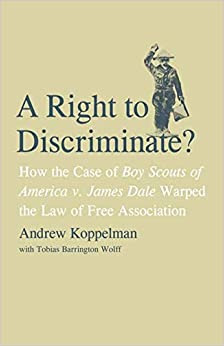
Andrew Koppelman and Tobias Barrington Wolff, A Right to Discriminate?: How the Case of Boy Scouts of America v. James Dale Warped the Law of Free Association (Yale University Press 2009)

Jack M. Balkin and Reva B. Siegel, The Constitution in 2020 (Oxford University Press 2009)
Heather K. Gerken, The Democracy Index: Why Our Election System Is Failing and How to Fix It (Princeton University Press 2009)

Mary Dudziak, Exporting American Dreams: Thurgood Marshall's African Journey (Oxford University Press 2008)

David Luban, Legal Ethics and Human Dignity (Cambridge Univ. Press 2007)

Ian Ayres, Super Crunchers: Why Thinking-By-Numbers is the New Way to be Smart (Bantam 2007)

Jack M. Balkin, James Grimmelmann, Eddan Katz, Nimrod Kozlovski, Shlomit Wagman and Tal Zarsky, eds., Cybercrime: Digital Cops in a Networked Environment (N.Y.U. Press 2007)

Jack M. Balkin and Beth Simone Noveck, The State of Play: Law, Games, and Virtual Worlds (N.Y.U. Press 2006)

Andrew Koppelman, Same Sex, Different States: When Same-Sex Marriages Cross State Lines (Yale University Press 2006)
Brian Tamanaha, Law as a Means to an End (Cambridge University Press 2006)
Sanford Levinson, Our Undemocratic Constitution (Oxford University Press 2006)
Mark Graber, Dred Scott and the Problem of Constitutional Evil (Cambridge University Press 2006)
Jack M. Balkin, ed., What Roe v. Wade Should Have Said (N.Y.U. Press 2005)
Sanford Levinson, ed., Torture: A Collection (Oxford University Press 2004)
Balkin.com homepage
Bibliography
Conlaw.net
Cultural Software
Writings
Opeds
The Information Society Project
BrownvBoard.com
Useful Links
Syllabi and Exams